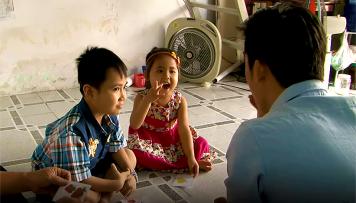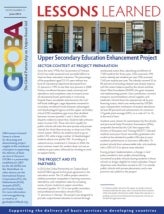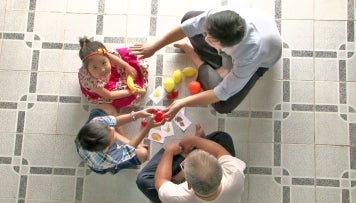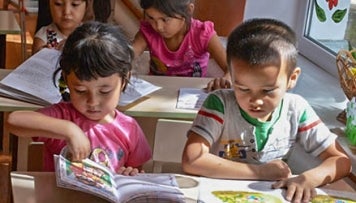
Photo-WB
When her teachers first met Lo Mu Du Ly-Et, from Lam Dong Province had no sign language skills. Now, at age of 13 and thanks to the sign language and other learning material developed by the Quality Improvement of Primary Education for Deaf Children Project (QIPEDC), she communicates and attends school. Her life and future have been transformed.
"We were lucky to be able to access a good set of sign language materials suitable for primary school students so that she and her friends could learn quickly," said Nguyen Thi Ngoc Minh, Headmaster of the Lam Dong Province School for the Deaf." Ngoc Minh is referring to the 4,000 Vietnamese sign word catalogue and 150 video lessons covering math and other subjects for students in grades 1–5 developed under QIPEDC.
Ly-Et is just 1 of the almost 2,000 deaf children from 20 provinces across Vietnam whose lives this program has changed. Originally envisioned to serve just 1,200 children, the program—administered by the World Bank with funding from the Global Partnership for Results-Based Approaches—was an extraordinary success.
Increasing the Use of Sign Language and Creating a Support Community for Deaf Children
Sign language is not new in Vietnam, but it has not been widely used there. Since the World Bank–managed Intergenerational Deaf Education Project (IDEO) introduced a set of 2,000 gestures in 2015, sign language has gradually become part of preschool and kindergarten curricula. Even so, most of Vietnam's estimated 116,000 deaf children rely solely on reading lips or wearing hearing aids to communicate.
The QIPEDC project piloted an approach to integrate deaf children into the mainstream and special education by training parents, caregivers, teachers, and deaf mentors, thus creating a support community for deaf children from school to home.
The program trained almost 1,800 parents of deaf children and 429 teachers, including Nguyen Thi Ngoc Anh. As a deaf person herself, she understood the isolation of not being able to communicate. As a child, she said, "I kept wondering why my parents and others around me could hold long conversations, but they struggled to understand me, which to me was a big disappointment." Wanting a different outcome for deaf children, she became a sign language teacher.
Measuring Success and Widening Children's Prospects
The test scores of deaf students in the schools supported by the project improved significantly, with 97 percent of students in the program passing the exams for their grade levels, well above expectations.
Thanks to her son's success in the program, Tong Thi Nga, the mother of a deaf sixth grader, has an expanded view of his future. "I hope that he can achieve his dream," Nga said, hopeful that he might now qualify for a scholarship that would allow him to continue his education.
Expanding the Program's Reach
As the impact of the training courses became apparent, many project provinces shared training materials with schools that were not part of the project. When the project wound down, in September 2022, Vietnam's Ministry of Education and Training agreed to authorize the use of its materials nationwide.
The ministry also expressed interest in expanding the program to reach older students. "Implementation has been difficult, but the results are rewarding," said Nguyen Thi Minh, Vice Minister of the Ministry of Education and Training. "The 4,000 new signs are a good start. We will need to work together on the next phases to help with other education levels."








